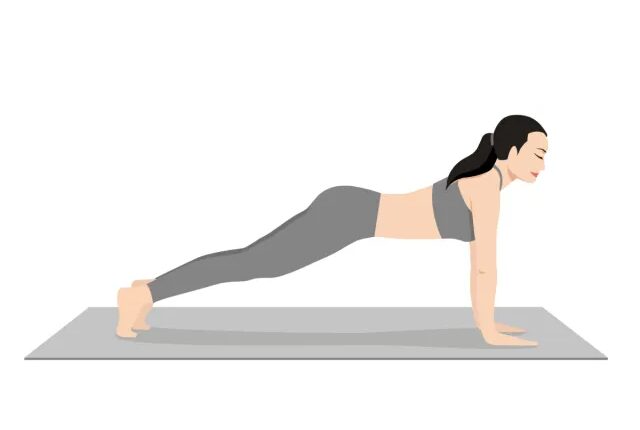Honing a robust and steady core is crucial for general fitness and preventing injuries. A resilient core not only boosts athletic prowess but also sustains your everyday tasks, advances posture, and diminishes the likelihood of experiencing back pain. Even though many people link core exercises with upright or gym routines, floor exercises can be just as efficient in honing the muscles that stabilize and fortify the midsection. In recognition of this, we have compiled five of the finest floor workouts for cultivating a solid core.
Integrating floor workouts into your regimen allows for increased emphasis on technique and command, which is vital for activating the core muscles efficiently. The floor offers support, empowering you to enlist your muscles without the chance of losing equilibrium. Moreover, floor exercises frequently diminish stress on the joints, rendering them attainable for individuals at different fitness levels. By executing these routines regularly, you can establish a robust core base that elevates your performance in other physical endeavors.
Outlined below are five top-notch floor workouts to aid in fortifying your core. Every workout comprises three exercises crafted to test your core strength and steadiness. By concentrating on distinct muscle clusters within the core, these exercises will not only boost your power but also contribute to promoting better functional motion and overall fitness.
Let’s dive into these effective workouts that will help you sculpt a powerful and resilient core.
Workout #1: Core Stabilizer
What You Need: No equipment is is needed, just your body weight. This workout focuses on enhancing core stability and strength and takes about 15 minutes to complete.
The Routine:
- Plank – 3 sets of 30 seconds
- Side Plank – 3 sets of 20 seconds per side
- Dead Bug – 3 sets of 10 reps per side
Directions: Perform all exercises in a circuit. Rest for 1 minute between rounds and complete 3 rounds total.
1. Plank
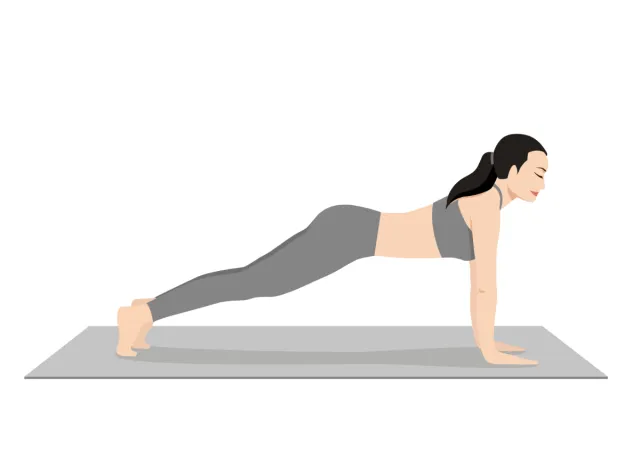
Planks engage your entire core, helping to build strength and endurance.
- Start in a pushup position with your arms straight and body in a straight line from your head to your heels.
- Keep your core tight and hold the position for the designated time.
- Avoid sagging or arching your back; maintain a neutral spine.
2. Side Plank
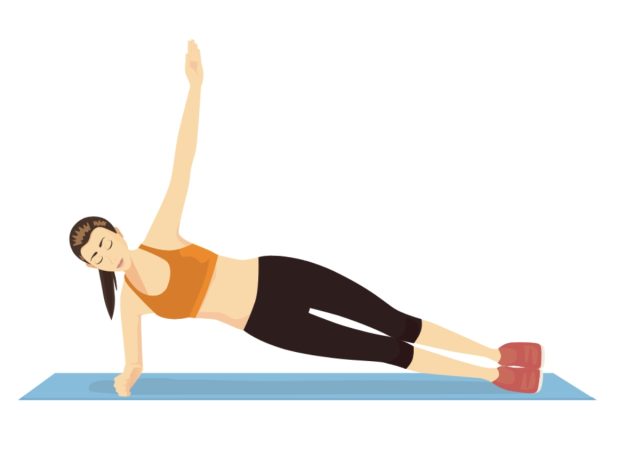
This exercise targets your obliques and helps improve lateral stability.
- Lie on your side with your legs straight and stacked on top of each other.
- Prop your upper body on your elbow, lifting your hips off the ground.
- Hold this position, ensuring your body forms a straight line from head to heels.
3. Dead Bug
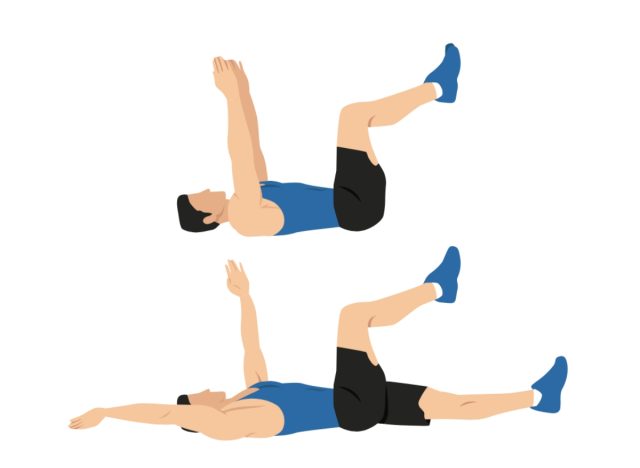
The dead bug reinforces core stability while moving the limbs.
- Lie on your back with your arms extended toward the ceiling and knees bent at 90 degrees.
- Slowly lower your right arm and left leg toward the floor, pressing your back against the mat.
- Return to the starting position and repeat on the opposite side.
Workout #2: Crunch Circuit
What You Need: No equipment is is needed. This workout focuses on building abdominal strength through various crunch variations and takes about 15 minutes to complete.
The Routine:
- Basic Crunch – 3 sets of 15 reps
- Bicycle Crunch – 3 sets of 15 reps per side
- Reverse Crunch – 3 sets of 12 reps
Directions: Perform all exercises in a circuit. Rest for 1 minute between rounds and complete 3 rounds total.
1. Basic Crunch
Crunches primarily target the upper abdominals.
- Lie on your back with your knees bent and feet flat on the floor.
- Place your hands behind your head and lift your shoulders off the ground, engaging your core.
- Lower back down and repeat for the designated reps.
2. Bicycle Crunch
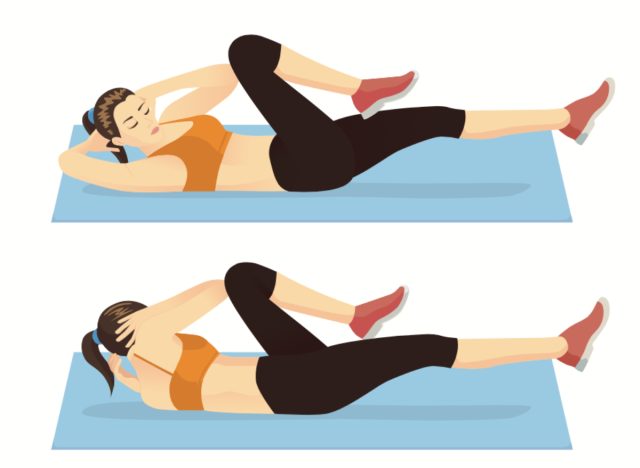
This variation engages both the upper and lower abs along with the obliques.
- Lie on your back with your knees bent and lift your legs into a tabletop position.
- Bring your right elbow toward your left knee while straightening your right leg.
- Switch sides, bringing your left elbow toward your right knee, mimicking a pedaling motion.
3. Reverse Crunch
Reverse crunches target the lower abdominal muscles.
- Lie on your back with your knees bent and feet lifted off the ground.
- Use your core to lift your hips off the floor, bringing your knees toward your chest.
- Lower back down and repeat for the designated reps.
Workout #3: Dynamic Core Workout
What You Need: A stability ball. This workout utilizes a stability ball to enhance core engagement and balance. It takes about 20 minutes to complete.
The Routine:
- Stability Ball Pass – 3 sets of 10 reps
- Stability Ball Rollout – 3 sets of 10 reps
- Stability Ball Knee Tuck – 3 sets of 12 reps
Directions: Perform all exercises in a circuit. Rest for 1 minute between rounds and complete 3 rounds total.
1. Stability Ball Pass
This exercise challenges your coordination while engaging the entire core.
- Lie on your back, holding a stability ball between your hands.
- Raise the ball overhead and extend your legs to a 45-degree angle.
- Pass the ball from your hands to your feet, then lower both arms and legs back to the starting position.
2. Stability Ball Rollout
Rollouts strengthen the core while enhancing stability and control.
- Kneel on the floor with the stability ball in front of you.
- Place your forearms on the ball and slowly roll it forward, extending your body.
- Engage your core to pull the ball back toward your knees and return to the starting position.
3. Stability Ball Knee Tuck
This exercise activates the lower abs and promotes stability.
- Start in a plank position with your shins resting on a stability ball.
- Roll the ball toward your chest by bending your knees.
- Extend your legs back out to the starting position and repeat.
Workout #4: Oblique Focus
What You Need: No equipment is needed. This workout emphasizes the oblique muscles to create a defined waist. It takes about 15 minutes to complete.
The Routine:
- Russian Twists – 3 sets of 20 reps
- Side Plank with Rotation – 3 sets of 10 reps per side
- Heel Touches – 3 sets of 15 reps per side
Directions: Perform all exercises in a circuit. Rest for 1 minute between rounds and complete 3 rounds total.
1. Russian Twists
This exercise strengthens the obliques and improves rotational strength.
- Sit on the floor with your knees bent and lean back slightly.
- Hold your hands together and twist your torso to the right, tapping the floor beside you.
- Return to the center and twist to the left side, alternating sides for the designated reps.
2. Side Plank with Rotation
This variation of the side plank engages the obliques dynamically.
- Start in a side plank position with your feet stacked and your right elbow beneath your shoulder.
- Rotate your torso toward the floor, bringing your top arm under your body.
- Return to the starting position and repeat, then switch sides.
3. Heel Touches
Heel touches target the obliques while reinforcing core stability.
- Lie on your back with your knees bent and feet flat on the floor.
- Lift your shoulders off the ground and reach your right hand toward your right heel.
- Return to the starting position and repeat on the left side, alternating sides for the designated reps.
Workout #5: Total Core Challenge
What You Need: No equipment needed. This comprehensive workout targets all areas of the core. It takes about 20 minutes to complete.
The Routine:
- Plank to Pushup – 3 sets of 10 reps
- V-ups – 3 sets of 12 reps
- Plank Jacks – 3 sets of 15 reps
Directions: Perform all exercises in a circuit. Rest for 1 minute between rounds and complete 3 rounds total.
1. Plank to Pushup
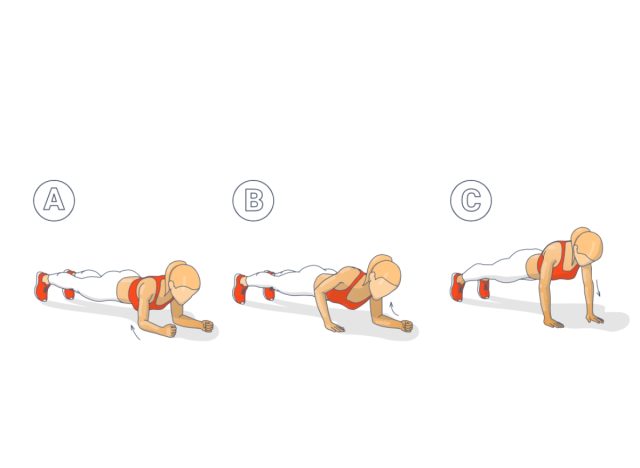
This exercise combines strength and stability training for the core.
- Start in a forearm plank position.
- Push up onto your hands one at a time until you are in a high plank.
- Lower back down to your forearms, alternating which arm you start with for each rep.
2. V-ups
V-ups engage both the upper and lower abs effectively.
- Lie flat on your back with your arms extended overhead and legs straight.
- Simultaneously lift your arms and legs off the ground, reaching for your toes to form a “V” shape.
- Lower back down and repeat for the designated reps.
3. Plank Jacks
This exercise elevates your heart rate while engaging the core.
- Start in a high plank position with your feet together.
- Jump your feet out wide, then back together, maintaining a stable upper body.
- Continue for the designated reps while keeping your core engaged.
FAQs
What are the benefits of floor workouts for core strength?
Floor workouts are effective for building core strength as they engage multiple muscle groups simultaneously. This can help improve stability, balance, posture, and overall strength of the core muscles. Unlike traditional gym equipment, floor exercises typically require minimal to no equipment, making them accessible to people of all fitness levels.
Are floor workouts suitable for beginners?
Yes, floor workouts are great for beginners as they can be modified to suit various fitness levels. Beginners can start with simple exercises such as planks, bird dogs, and glute bridges to gradually build core strength and stability. It is important to focus on proper form and technique to avoid injury and maximize the benefits of the workout.
How often should I incorporate floor workouts into my fitness routine?
The frequency of floor workouts can vary depending on individual fitness goals and schedules. It is generally recommended to perform core-focused exercises at least 2-3 times per week to see significant improvements in core strength. However, it is essential to listen to your body and allow for adequate rest and recovery between workouts.
Can floor workouts help in preventing back pain?
Yes, floor workouts that target the core muscles can help in preventing back pain by improving overall spinal stability and supporting proper posture. Strengthening the core muscles can reduce the load on the spine, thus decreasing the risk of developing lower back pain. It is important to perform exercises with proper form and engage the core muscles effectively to reap the benefits for back health.
Do I need any special equipment for floor workouts?
One of the advantages of floor workouts is that they typically require minimal equipment, making them accessible for home workouts or while traveling. While some exercises may incorporate simple fitness props like resistance bands or stability balls, many effective core workouts can be done using just your body weight. This makes floor workouts a convenient and cost-effective option for improving core strength and overall fitness.

